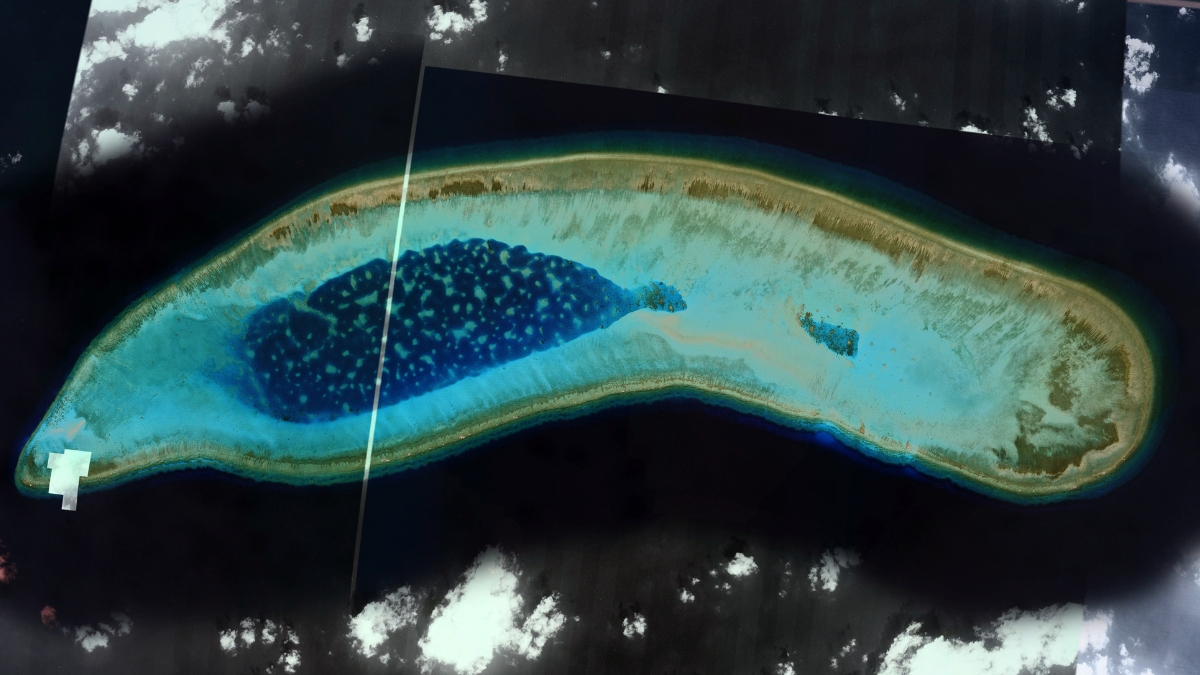China Eyes USS Connecticut Crash Site For Smart Minefield Strategy In South China Sea

The USS Connecticut, a Seawolf-class submarine, near the disputed territory of the Paracel Islands near the South China Sea. Image courtesy: RNA
Four years after the USS Connecticut, one of the most advanced nuclear submarines in the US Navy, struck an uncharted seamount in the South China Sea, Chinese military scientists are proposing to turn the same treacherous terrain into a strategic undersea minefield. If realised, this plan could significantly alter the balance of power in the contested waters.
How can Paracel be turned from an accident to a kill zone?
In August 2021, the Seawolf-class attack submarine Connecticut collided with a submerged seamount near the Paracel Islands, necessitating an emergency surfacing and underscoring the dangers of undersea navigation in the region’s complex terrain.
Now, researchers from the PLA Dalian Naval Academy and Harbin Engineering University suggest that these same “acoustic shadow zones,” areas where sonar signals scatter, weaken, or disappear, can be exploited to conceal next-generation sea mines.
Published in the peer-reviewed journal Technical Acoustics, their study argues that rugged seamounts and fractured soundscapes provide ideal hiding spots for smart, Artificial Intelligence-enabled weapons designed to evade detection and ambush enemy submarines or surface vessels.
What role would smart mines play in acoustic blind spots?
The proposed weapons are not conventional mines. According to the research team led by Associate Professor Ma Benjun, these large, rigid devices, more than two meters wide, would rest camouflaged on the seabed, coated to mimic the surrounding terrain.
Fitted with acoustic, magnetic, and optical sensors, they could autonomously identify vessels by unique sound signatures and strike only when a designated target, such as a US submarine or carrier group, enters their range.
Tests and simulations suggest that mines planted in sonar blind zones have nearly a 50% chance of escaping detection, with effectiveness reaching 80% in the deepest acoustic shadows. If deployed across the South China Sea, such a minefield could complicate US Navy operations that have long depended on near-invisible nuclear submarines to maintain dominance.
How are the Paracel Islands a strategic hub?\

The Paracel chain, known as Xisha in China and Hoang Sa in Vietnam, lies about 300 nautical miles south of China’s mainland. Beijing seized control in 1974 and has since fortified the islands with an airfield, deep-water port, radar facilities, and garrisons. While China claims sovereignty, Vietnam and Taiwan contest ownership, and the Philippines and Malaysia assert overlapping maritime claims.
For the United States, the islands are a flashpoint in its freedom of navigation patrols, which routinely bring warships and submarines close to Chinese-occupied features. The Connecticut incident underscored the hazards of these missions and the vulnerabilities submarines face in poorly charted waters.
How does this development shift undersea warfare?
China’s minefield concept forms part of a wider modernisation in anti-submarine warfare (ASW). Beijing is investing in seabed sonar networks dubbed an “underwater BeiDou,” swarms of Haiyi sea-wing drones, and advanced quantum sensors capable of detecting submarine-induced gravity anomalies. These technologies, combined with aerial platforms like the Y-8Q patrol aircraft and satellite surveillance, aim to move China from a defensive posture to active submarine hunting.
For decades, the United States has enjoyed superiority beneath the waves, thanks to ultra-quiet Seawolf and Virginia-class submarines. But if China succeeds in transforming natural acoustic blind spots into weaponised kill zones, the South China Sea could evolve into one of the most dangerous undersea battlefields in modern history.






